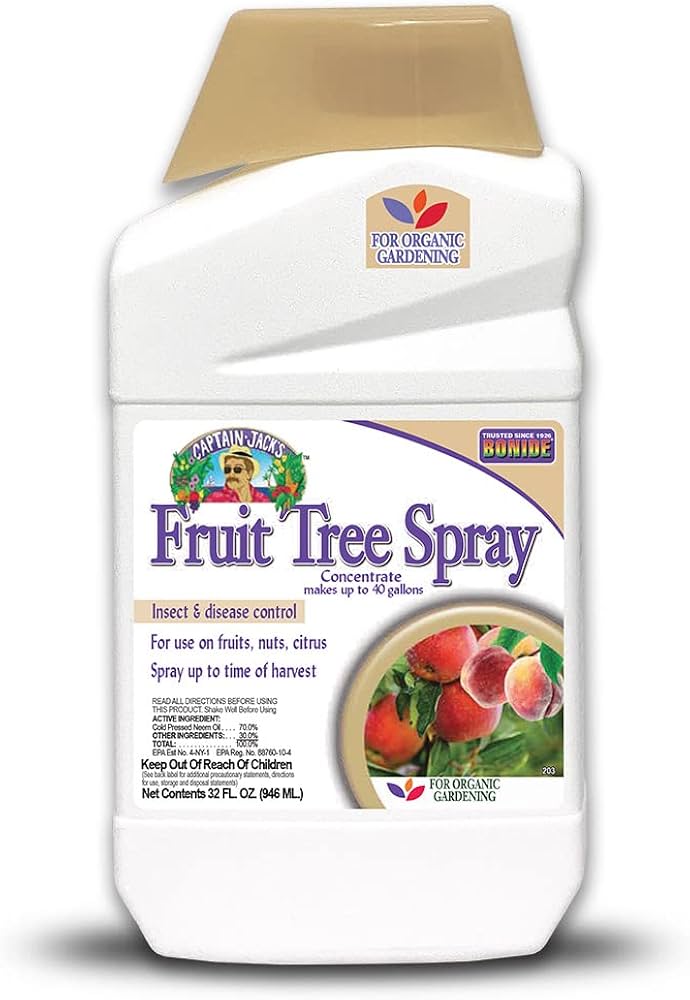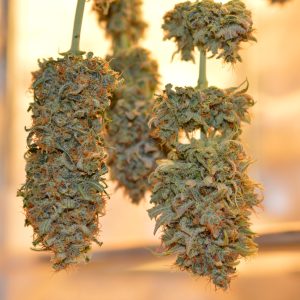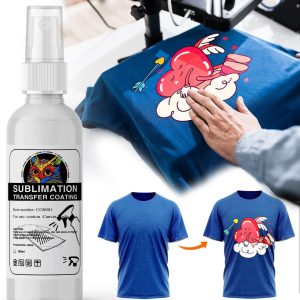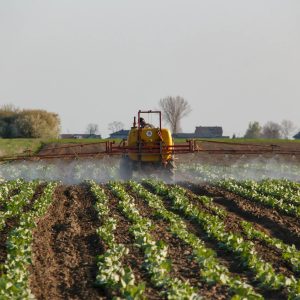
Growing healthy, productive fruit trees requires more than just proper planting and watering. Fruit tree spray applications play a crucial role in protecting your orchard investment from pests, diseases, and environmental stresses that can devastate entire harvests. Whether you’re managing a commercial orchard or nurturing backyard fruit trees, understanding the science and strategy behind effective spraying programs can mean the difference between abundant harvests and costly crop losses.
Modern fruit cultivation faces increasing challenges from evolving pest populations, climate change impacts, and consumer demands for both high-quality produce and reduced chemical residues. Professional growers and home gardeners alike must navigate complex decisions about spray timing, product selection, and application methods to achieve optimal results while maintaining environmental responsibility.
Understanding Fruit Tree Spray Applications and Their Critical Importance
Fruit tree spray systems serve as the primary defense mechanism against the numerous threats that can compromise fruit quality, yield, and tree health. These specialized formulations target specific problems at precise growth stages, creating protective barriers that allow trees to channel energy into fruit development rather than fighting off invasive organisms.
The complexity of fruit tree spray programs reflects the intricate lifecycle interactions between trees, pests, beneficial insects, and environmental conditions. Successful spray applications require understanding not just what to spray, but when, how, and why specific treatments work most effectively. This knowledge becomes particularly critical as pest resistance increases and regulatory requirements evolve.
Professional orchardists typically implement integrated pest management (IPM) approaches that combine multiple spray strategies with cultural practices, biological controls, and monitoring systems. These comprehensive programs reduce overall chemical inputs while maintaining consistent protection levels throughout the growing season.
Primary Categories of Fruit Tree Spray Products
Modern fruit tree spray products fall into several distinct categories, each designed for specific protection needs:
Insecticides target destructive insects during vulnerable life stages, preventing damage to developing fruits and tree structures. These products range from broad-spectrum synthetic compounds to highly specific biological agents that target individual pest species without harming beneficial insects.
Fungicides prevent and control fungal diseases that can cause fruit rot, leaf spots, cankers, and other conditions that reduce tree vigor and fruit quality. Many fungicide spray programs focus on preventive applications during high-risk weather conditions rather than curative treatments after symptoms appear.
Bactericides address bacterial infections that can cause fire blight, bacterial canker, and other serious diseases. These specialized spray products often require precise timing and specific application conditions to achieve maximum effectiveness.
Horticultural oils provide multi-purpose protection by suffocating overwintering insects, disrupting pest feeding behaviors, and creating protective barriers on fruit surfaces. These spray options appeal to growers seeking reduced-risk alternatives to synthetic pesticides.
Essential Timing Strategies for Fruit Tree Spray Applications
Successful fruit tree spray programs depend heavily on precise timing that aligns with tree growth stages, pest lifecycles, and weather conditions. Understanding these temporal relationships allows growers to maximize spray effectiveness while minimizing applications and costs.
The dormant season represents the first critical spray window for most fruit trees. Dormant oil sprays applied during late winter target overwintering insects and disease spores before they become active. These applications must occur when temperatures remain consistently above freezing but before bud break begins.
Spring spray timing becomes increasingly complex as trees progress through bloom and early fruit development. Pre-bloom sprays focus on preventing primary infections from fungal diseases while avoiding harm to pollinating insects. Post-bloom applications target emerging pest populations and secondary disease infections during the most vulnerable fruit development stages.
Summer spray programs maintain protection during rapid fruit growth and maturation periods. These applications must balance pest control needs with pre-harvest interval requirements that ensure safe residue levels at harvest time. Integrated timing strategies often reduce spray frequency during this period while maintaining adequate protection levels.
Weather-Dependent Spray Timing Considerations
Environmental conditions significantly influence fruit tree spray effectiveness and application timing decisions. Temperature, humidity, wind speed, and precipitation all affect how spray products perform and persist on tree surfaces.
Temperature management becomes critical for many spray products that lose effectiveness at extreme temperatures or cause phytotoxicity when applied during hot conditions. Most fruit tree sprays perform optimally when applied during cooler morning or evening hours when temperatures range between 60-80°F.
Humidity and moisture conditions directly impact fungicide performance and disease pressure levels. High humidity periods often trigger increased spray frequency to prevent fungal infections, while low humidity conditions may reduce spray effectiveness and require adjuvants to improve coverage.
Wind conditions during spray applications affect coverage uniformity and drift potential. Professional applicators typically suspend spray operations when wind speeds exceed 10 mph to ensure adequate coverage and prevent off-target movement.
Organic and Natural Fruit Tree Spray Solutions
Growing consumer demand for organic produce has driven significant innovation in organic fruit tree spray formulations that provide effective pest and disease control without synthetic chemicals. These products rely on naturally occurring compounds, beneficial microorganisms, and physical modes of action to protect fruit trees.
Biological spray agents utilize living organisms such as beneficial bacteria, fungi, and viruses to control specific pests and diseases. Bacillus thuringiensis (Bt) sprays target caterpillar pests, while beneficial fungi like Trichoderma species help prevent root and crown diseases through competitive exclusion.
Botanical extract sprays derive active ingredients from plants with natural pesticide properties. Neem oil, pyrethrin, and essential oil-based formulations provide pest control while breaking down rapidly in the environment. These products often require more frequent applications but offer reduced environmental persistence compared to synthetic alternatives.
Mineral-based spray products include sulfur, copper, and potassium bicarbonate formulations that prevent fungal diseases through direct antimicrobial action. These traditional spray materials continue to play important roles in organic fruit production systems despite their relatively high application rates.
Organic Spray Program Integration
Successful organic fruit tree spray programs typically combine multiple product types with enhanced cultural practices to achieve acceptable pest and disease control levels. This integrated approach recognizes that organic products often provide narrower control spectrums and shorter residual activity compared to synthetic alternatives.
Rotation strategies become essential in organic spray programs to prevent pest and pathogen resistance while maintaining control effectiveness. Alternating between different modes of action helps preserve the long-term viability of organic control options.
Enhanced monitoring requirements in organic systems help optimize spray timing and product selection. Regular scouting for pest populations, disease symptoms, and beneficial insect activity guides spray decisions and prevents unnecessary applications.
Professional Application Techniques for Maximum Fruit Tree Spray Effectiveness
Proper fruit tree spray application technique directly determines treatment effectiveness, regardless of product quality or timing. Professional applicators understand that achieving uniform coverage while minimizing waste requires attention to equipment settings, spray pressures, and movement patterns.
Spray equipment calibration ensures accurate application rates and consistent coverage patterns. Regular calibration checks verify that nozzle outputs match target rates and that spray patterns provide adequate overlap between passes. Many spray failures result from equipment problems rather than product ineffectiveness.
Coverage optimization techniques focus on reaching all tree surfaces where pests and diseases typically establish. This includes spray penetration into dense canopy areas, thorough coverage of fruit surfaces, and adequate treatment of trunk and scaffold branch areas where many pests overwinter.
Drift management practices protect non-target areas while ensuring that spray materials reach intended surfaces. Proper nozzle selection, appropriate spray pressures, and favorable weather conditions minimize off-target movement while maintaining treatment effectiveness.
Spray Volume and Concentration Considerations
Fruit tree spray programs must balance spray volume, concentration, and coverage to achieve optimal results while managing costs and environmental impacts. Higher spray volumes generally improve coverage but increase application costs and environmental loading.
Concentrate spray applications reduce spray volume while maintaining active ingredient delivery rates. These programs require specialized equipment and enhanced application techniques but offer advantages in terms of speed, efficiency, and reduced water requirements.
Dilute spray programs use higher water volumes to improve coverage and reduce phytotoxicity risks. These applications often provide more consistent results for inexperienced applicators and help ensure adequate coverage in dense canopy situations.
Seasonal Spray Calendar Development for Fruit Trees
Creating an effective fruit tree spray calendar requires understanding the specific needs of different fruit species, local pest and disease pressure, and seasonal weather patterns. Successful spray programs typically follow established frameworks while allowing flexibility for year-to-year variations.
Spring spray sequences typically begin with dormant applications targeting overwintering pests and disease inoculum. These early treatments set the foundation for seasonal protection by reducing initial pest populations and preventing primary disease infections.
Bloom period management presents unique challenges for fruit tree spray programs due to the need to protect pollinating insects while maintaining disease control. Many programs suspend insecticide applications during bloom while continuing fungicide treatments for diseases like fire blight and brown rot.
Post-harvest spray applications focus on preparing trees for winter dormancy and controlling late-season pests that can damage stored fruit or overwinter in orchard environments. These treatments often receive less attention but play crucial roles in maintaining tree health and reducing next season’s pest pressure.
Species-Specific Spray Program Modifications
Different fruit tree species require customized spray programs that address their unique pest complexes, disease susceptibilities, and growth characteristics. Apple, pear, stone fruit, and citrus trees each face distinct challenges that influence spray timing and product selection.
Apple tree spray programs typically emphasize codling moth control, fire blight prevention, and scab management. These programs often require the most intensive spray schedules due to the wide range of pests and diseases affecting apple production.
Stone fruit spray programs focus heavily on brown rot prevention, oriental fruit moth control, and bacterial canker management. The shorter growing season for many stone fruits allows for more concentrated spray programs with fewer total applications.
Citrus spray programs address unique challenges such as citrus leafminer, scale insects, and citrus canker. These programs often extend year-round in warmer climates and require specialized products for citrus-specific problems.
Integrated Pest Management and Fruit Tree Spray Programs
Modern fruit tree spray programs increasingly incorporate Integrated Pest Management (IPM) principles that combine chemical, biological, and cultural control methods to achieve sustainable pest and disease management. This approach reduces reliance on any single control method while maintaining effective protection levels.
Monitoring and threshold systems form the foundation of IPM-based spray programs by determining when pest populations or disease pressure justify treatment applications. Regular scouting activities track pest development, beneficial insect populations, and environmental conditions that influence treatment timing.
Biological control integration preserves and enhances beneficial insect populations that provide natural pest suppression. IPM spray programs carefully select products and timing to minimize impacts on predators and parasites while maintaining target pest control.
Resistance management strategies rotate between different modes of action to prevent pest and pathogen adaptation to specific spray products. This approach maintains long-term effectiveness of control options while reducing selection pressure for resistant populations.
Economic Considerations in IPM Spray Programs
Cost-benefit analysis plays an increasingly important role in fruit tree spray program development as input costs rise and market pressures intensify. IPM approaches often reduce total spray costs while maintaining or improving control effectiveness through better timing and product selection.
Threshold-based applications eliminate unnecessary spray treatments by applying products only when pest populations or disease pressure exceed economic damage levels. This approach can significantly reduce spray costs while maintaining acceptable crop protection.
Premium market access often justifies additional spray program costs for products that meet specific market requirements such as organic certification, reduced residue levels, or sustainable production practices.
Safety Protocols and Regulatory Compliance for Fruit Tree Spray Operations
Professional fruit tree spray operations must comply with complex regulatory requirements while maintaining worker safety and environmental protection standards. These requirements continue to evolve as new products enter the market and regulatory agencies update safety assessments.
Personal protective equipment (PPE) requirements vary by product type and application method but typically include respiratory protection, chemical-resistant clothing, and eye protection. Proper PPE selection and maintenance protect applicators from acute and chronic exposure risks.
Pre-harvest interval (PHI) compliance ensures that spray residues fall below established tolerances before harvest. Violation of PHI requirements can result in crop rejection, legal penalties, and market access restrictions that far exceed the cost of proper spray program management.
Environmental protection measures prevent contamination of water sources, non-target vegetation, and sensitive habitats. These requirements often influence spray timing, product selection, and application methods in ways that affect overall program effectiveness.
Record Keeping and Documentation Requirements
Comprehensive spray records document all applications including products used, rates, timing, weather conditions, and target pests or diseases. These records serve legal, regulatory, and management purposes while providing valuable data for program evaluation and improvement.
Traceability systems track fruit from production through marketing to ensure compliance with food safety requirements and enable rapid response to contamination events. Proper spray documentation forms a critical component of these traceability programs.
Audit preparation for third-party certifications often requires detailed spray records that demonstrate compliance with specific standards for worker safety, environmental protection, and product quality.
Troubleshooting Common Fruit Tree Spray Problems
Even well-planned fruit tree spray programs can encounter problems that reduce effectiveness or cause unexpected plant injury. Understanding common issues and their solutions helps maintain program success while minimizing crop losses.
Poor coverage problems often result from inadequate spray volume, improper equipment settings, or unfavorable weather conditions. Symptoms include inconsistent pest control, uneven residue distribution, and areas of crop damage adjacent to properly protected areas.
Phytotoxicity issues can occur when spray products cause plant injury due to excessive rates, tank mix incompatibilities, or application during stressful environmental conditions. These problems typically manifest as leaf burn, fruit russeting, or growth distortion.
Resistance development becomes apparent when previously effective products fail to control target pests or diseases despite proper application. This situation requires immediate program modifications to prevent complete control failure.
Spray Equipment Maintenance and Calibration
Regular equipment maintenance prevents many spray program failures by ensuring consistent performance and accurate application rates. Preventive maintenance schedules typically include daily, weekly, and seasonal service requirements that address different system components.
Calibration procedures verify that spray equipment delivers accurate rates and provides uniform coverage patterns. These procedures should be performed regularly and whenever equipment modifications are made or performance problems are suspected.
Nozzle management represents a critical but often overlooked aspect of spray equipment maintenance. Worn or damaged nozzles can significantly affect spray pattern, droplet size, and application accuracy even when other system components function properly.
Ready to optimize your orchard’s health and productivity? Invest in a comprehensive fruit tree spray program today and protect your valuable fruit trees from pests and diseases that can devastate your harvest.
Sources and Additional Information:
- University Extension Fruit Tree Spray Guidelines
- Integrated Pest Management Practices for Tree Fruits
- Organic Fruit Production Certification Standards





